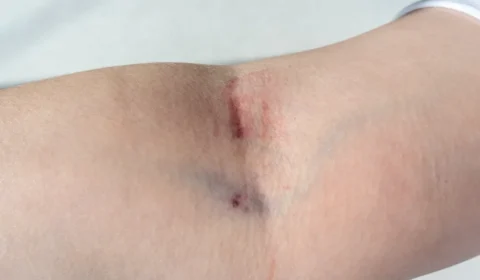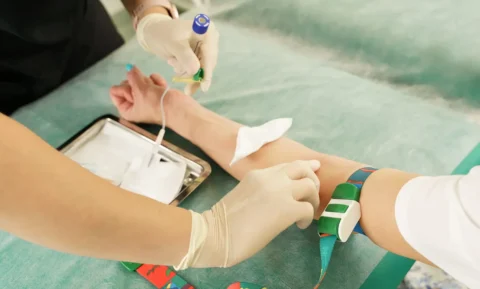Botox and dermal fillers are two popular treatments in the field of facial aesthetics because they have many uses and applications. While many practitioners are improving their skills, others are developing advanced Botox techniques that might not be included in a previous Botox training course. Attending an advanced dermal filler and Botox training is a must to build your skills and reputation as a trusted Botox provider.
So what should a medical professional expect when they sign up for an advanced dermal filler and Botox training course? The first step is ensuring that they have all the needed requirements to attend an advanced Botox or dermal filler training course. During their advanced course, they learn in-depth information and techniques like facial reshaping, combination treatments, injection techniques, off-label uses, and medical Botox or filler treatments.
Enrolling in Advanced Botox and Filler Training
According to the Plastic Surgery Statistics Report by the ASPS, Botox cosmetic injections and dermal fillers are the top minimally invasive procedures in the country with about 7.8 million treatments performed in 2020 alone. Because of the demand for these injectables, many health professionals are taking aesthetic medicine courses to earn Botox or dermal filler certification.
Aestheticians who attended introductory courses and training on medical aesthetics are already familiar with Botox and injectable fillers. However, they’re still encouraged to take an advanced botulinum toxin and dermal fillers course to improve their injection technique, learn about the new advancements in aesthetic medicine, and gain certification for more complicated aesthetic procedures.
Who Is Qualified for This Training?
Any qualified physician assistant, nurse practitioner, or other healthcare professionals who want to enhance their knowledge about injectable treatment can do so by attending injection training and advanced aesthetic courses.
Before signing up for any dermal filler or Botox injections course, make sure to have proof of qualification first from the state you want to offer your services in. This is also the first thing that instructors and institutions look for when you sign up for their advanced aesthetic courses.
Another important requirement for an advanced Botox and dermal filler course is proof that you already completed basic Botox and dermal filler training from any institution or training facility. Some institutions also require a certain length of time in which you already administered the aesthetic procedure on a live patient.
In most training facilities, you need at least 6 months of experience in injecting Botox and dermal fillers after gaining your basic dermal filler or Botox course certification. Make sure to ask the institution about the requirements first before enrolling in their advanced aesthetic treatments course.
What You Can Learn About
Basic aesthetic courses that focus on botulinum toxin injections and dermal fillers discuss all the essential information about both facial rejuvenation treatments, but advanced training courses are for more complicated treatment techniques and topics like:
1) Facial Reshaping With Botox or Dermal Fillers
The liquid facelift is a popular aesthetic procedure that many patients prefer over plastic surgery. It only involves Botox and dermal filler injections so patients don’t need to worry about serious complications and long downtime. It’s an effective minimally invasive procedure that can reshape the facial profile of a patient according to their preference.
Facial reshaping using Botox and dermal fillers can be complicated in some cases because there are lots of injection sites on the face. Advanced courses about injectable treatments emphasize the importance of studying facial anatomy so providers can determine the best injection areas for a liquid facelift.
2) Combining Botox and Dermal Fillers
Botox and dermal fillers are both excellent anti-aging treatments, but they’re not interchangeable because they work in different ways. Since Botox injections smooth dynamic wrinkles and dermal fillers work best for hollowness and static wrinkles, many patients choose to combine the two injectable treatments for the best anti-aging results.
Advanced Botox and filler training course teaches aspiring aestheticians when to recommend combination treatments to a patient. It should also discuss the different brands and types of botulinum toxin injections (Botox, Dysport, Xeomin) or dermal fillers (Restylane, Juvederm Ultra, Sculptra, Radiesse, and more), as well as which pairings work best together.
3) Proper Injection Techniques
Different injectables and treatment areas require different injection techniques. For example, a tear trough filler procedure is more complicated than other filler treatments because the area under the eye is extremely sensitive. The provider may use a needle or a cannula for the procedure, but they need to consider which one penetrates the skin better while minimizing the risk of hitting a blood vessel in the face.
Botox and dermal filler courses teach providers the best injection techniques for each treatment area according to the safety guidelines set by the state and the FDA. Proper injection techniques ensure that patients get the best results for their treatment while minimizing the risk of developing serious complications or side effects.
4) Off-Label Uses of Botox and Dermal Fillers
Dermal fillers and botulinum toxin injections have lots of different applications, but not all of them are approved by the FDA. These uses are called “off-label” but it doesn’t necessarily mean they’re dangerous for patients when performed.
Off-label uses of Botox and dermal fillers are actually a common practice. Some of the most common off-label uses include liquid nose jobs, erasing acne scars, and adding volume to earlobes. Since the FDA doesn’t have recommended safety guidelines for these treatments, providers should attend advanced training courses that teach them how to perform the procedure before offering it to their patients.
5) Diagnosing and Treating Medical Conditions With Botox
Botox is mostly known as a wrinkle reduction treatment, but this muscle-relaxing injectable also has medical uses. Advanced botulinum toxin treatment training teaches medical professionals how to diagnose certain medical conditions and treat them with Botox injections.
Temporomandibular joint (TMJ) disorders and hyperhidrosis (excessive sweating) can be managed with Botox. Advanced courses discuss these conditions and many others in great detail – from the signs and symptoms to the best injection areas where Botox should be administered.
Benefits of Advanced Botox and Filler Training
Advanced courses on Botox and dermal fillers are designed to help providers improve their injection skills once they’re already confident with their basic injectable treatment techniques. By attending these courses, aestheticians can experience the following benefits:
- Knowing how to perform more complicated injectable treatments allows providers to cater to more interested patients.
- Aestheticians can treat more patients in a day than normal.
- Advanced Botox and dermal filler certification give providers a competitive edge in the industry.
- Providers who have advanced injectable treatment certification offer better treatments to their patients because of their extensive skill set.
How to Choose the Best Advanced Botox and Filler Course
There are lots of institutions and training facilities that offer advanced courses on injectables like Botox and dermal fillers which makes it difficult for interested aestheticians to find the one that works for them. When choosing between many advanced Botox and filler courses, make sure to ask the following questions:
- Does the training include an extensive overview of facial anatomy?
- Will there be a chance for hands-on training?
- Is the curriculum based on the latest advancements, reliable sources, and solid clinical evidence?
- Does the course have CME credits?
- How long has the institution been offering advanced courses on Botox and dermal fillers?
- What are the credentials of the course instructor?
Sign Up for FACE Med Store’s Aesthetic Courses Today
At FACE Med Store, you can find different aesthetics courses to help widen your knowledge of injectable treatments and enhance your injection skills. Our online courses have CME credits and are developed by experienced injectors and instructors, so you can have a better understanding of different aesthetic treatments.
We also have an extensive catalog of beauty and medical supplies for any businesses or regular clients that might need them. Know more about our online courses and other products by calling us today.






